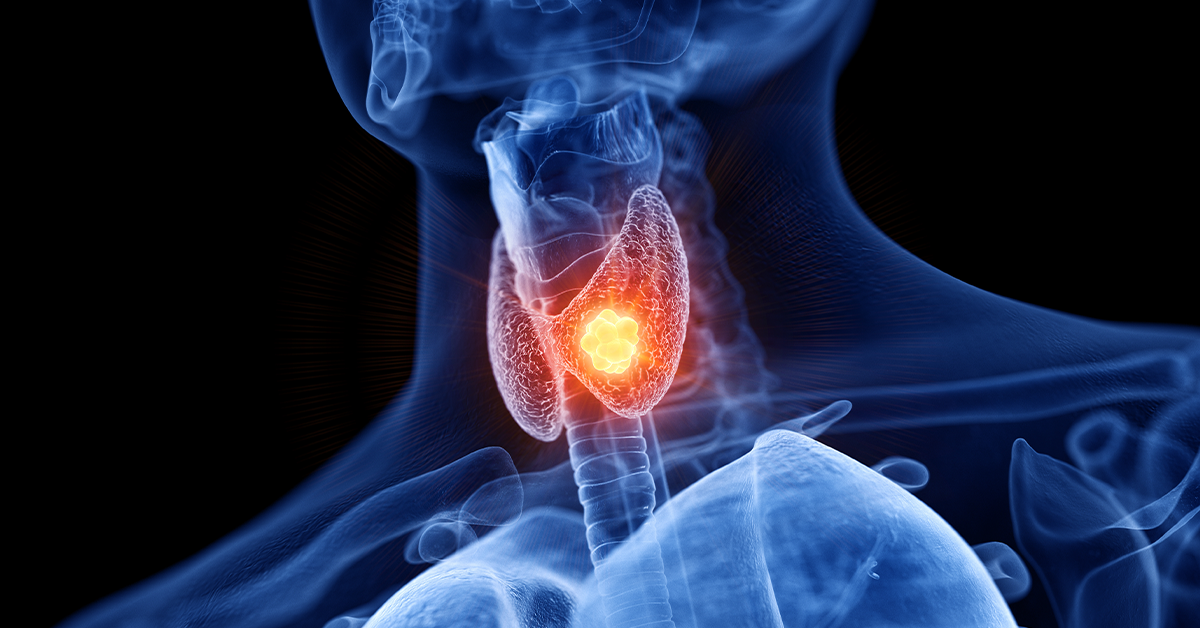The thyroid is a small, butterfly-shaped gland measuring about 2 inches across at the base of the neck. Its sides, or lobes, lie on either side of the windpipe and are connected by a strip of tissue called an isthmus. The thyroid manufactures hormones that control metabolism, the process by which the body changes food and drink into energy.
The two main hormones produced by the thyroid are triiodothyronine (T3) and thyroxine (T4). These tell cells how much energy to use to function optimally. When the thyroid is healthy, it maintains a proper balance of T3 and T4 to keep metabolism working at the correct rate.
The amount of T3 and T4 produced is regulated by two other glands: the pituitary and hypothalamus. The pituitary gland, located at the base of the brain, is often called the “master gland” because it controls the activities of many other glands. It creates thyroid-stimulating hormone (TSH), which signals the thyroid to produce and release more or less T3 and T4.
The pituitary responds to signals from the hypothalamus, located in the brain just above the pituitary gland. The hypothalamus releases thyrotropin-releasing hormone (TRH), which controls how much TSH the pituitary releases.
Hyperthyroidism, or overactive thyroid, occurs when the thyroid makes too much T3 and T4. Hypothyroidism, of underactive thyroid, happens when there is not enough T3 or T4.
Hyperthyroidism affects between 1 and 3 percent of the US population and is more common in women. The most common cause of overactive thyroid is Graves’ disease, an autoimmune disorder in which the immune system mistakenly attacks the thyroid. Nodules on the thyroid can also cause it to be overactive.
Symptoms of hyperthyroidism include racing heart rate, restlessness, irritability, increased sweating, anxiety, trouble sleeping, thin skin, brittle hair and nails, muscle weakness, weight loss, increased appetite, frequent bowel movements and bulging eyes (common with Graves’ disease).
Diagnosing overactive thyroid typically involves blood tests that measure the levels of thyroid hormones and TSH. The doctor may give radioactive iodine and measure how much the tnyroid absorbs. The thyroid uses iodine to make hormones. If the thyroid absorbs a lot of the radioactive iodine, it’s likely overactive.
Doctors may also use an ultrasound, an imaging test that sends high-frequency sound waves through body tissues. The echoes that are created are turned into video or photographic images.
The goal of treatment for hyperthyroidism is to destroy the thyroid or block it from making its hormones. This may be done using antithyroid medications; radioiodine therapy, in which a large dose of radioactive iodine damages the thyroid; or surgery to remove part or all of the thyroid.
With hypothyroidism, the thyroid cannot produce a sufficient amount of T3 and T4. This can cause metabolism to slow down. Underactive thyroid is often caused by a condition called Hashimoto’s thyroiditis, an autoimmune disorder causing inflammation of the thyroid, surgery that removed the thyroid or damage caused by radiation treatment.
Hypothyroidism signs and symptoms include fatigue; increased sensitivity to cold; constipation; dry skin; weight gain; muscle aches, tenderness or stiffness; pain, stiffness or swelling in joints; thinning hair; slow heart rate; depression; puffy face; and horse voice.
To diagnose underactive thyroid, a doctor will perform a complete physical exam and history of symptoms. Blood tests are used to measure levels of T4 and TSH.
Treatment for hypothyroidism is hormone replacement therapy with a synthetic version of the thyroid hormones. This treatment usually involves taking the medication levothyroxine.
January is National Thyroid Awareness Month. Celebrate it by giving some thought to your thyroid.





Leave a Reply